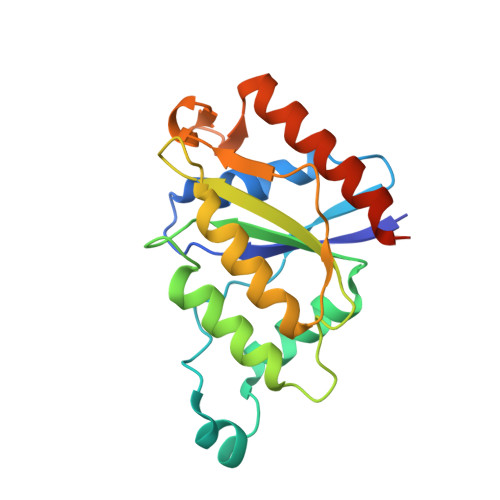Crystal Structure of ChrR-A Quinone Reductase with the Capacity to Reduce Chromate.
Eswaramoorthy, S., Poulain, S., Hienerwadel, R., Bremond, N., Sylvester, M.D., Zhang, Y.B., Berthomieu, C., Van Der Lelie, D., Matin, A.(2012) PLoS One 7: e36017-e36017
- PubMed: 22558308
- DOI: https://doi.org/10.1371/journal.pone.0036017
- Primary Citation of Related Structures:
3SVL - PubMed Abstract:
The Escherichia coli ChrR enzyme is an obligatory two-electron quinone reductase that has many applications, such as in chromate bioremediation. Its crystal structure, solved at 2.2 Å resolution, shows that it belongs to the flavodoxin superfamily in which flavin mononucleotide (FMN) is firmly anchored to the protein. ChrR crystallized as a tetramer, and size exclusion chromatography showed that this is the oligomeric form that catalyzes chromate reduction. Within the tetramer, the dimers interact by a pair of two hydrogen bond networks, each involving Tyr128 and Glu146 of one dimer and Arg125 and Tyr85 of the other; the latter extends to one of the redox FMN cofactors. Changes in each of these amino acids enhanced chromate reductase activity of the enzyme, showing that this network is centrally involved in chromate reduction.
- Department of Biology, Brookhaven National Laboratory, Upton, New York, USA.
Organizational Affiliation:


















